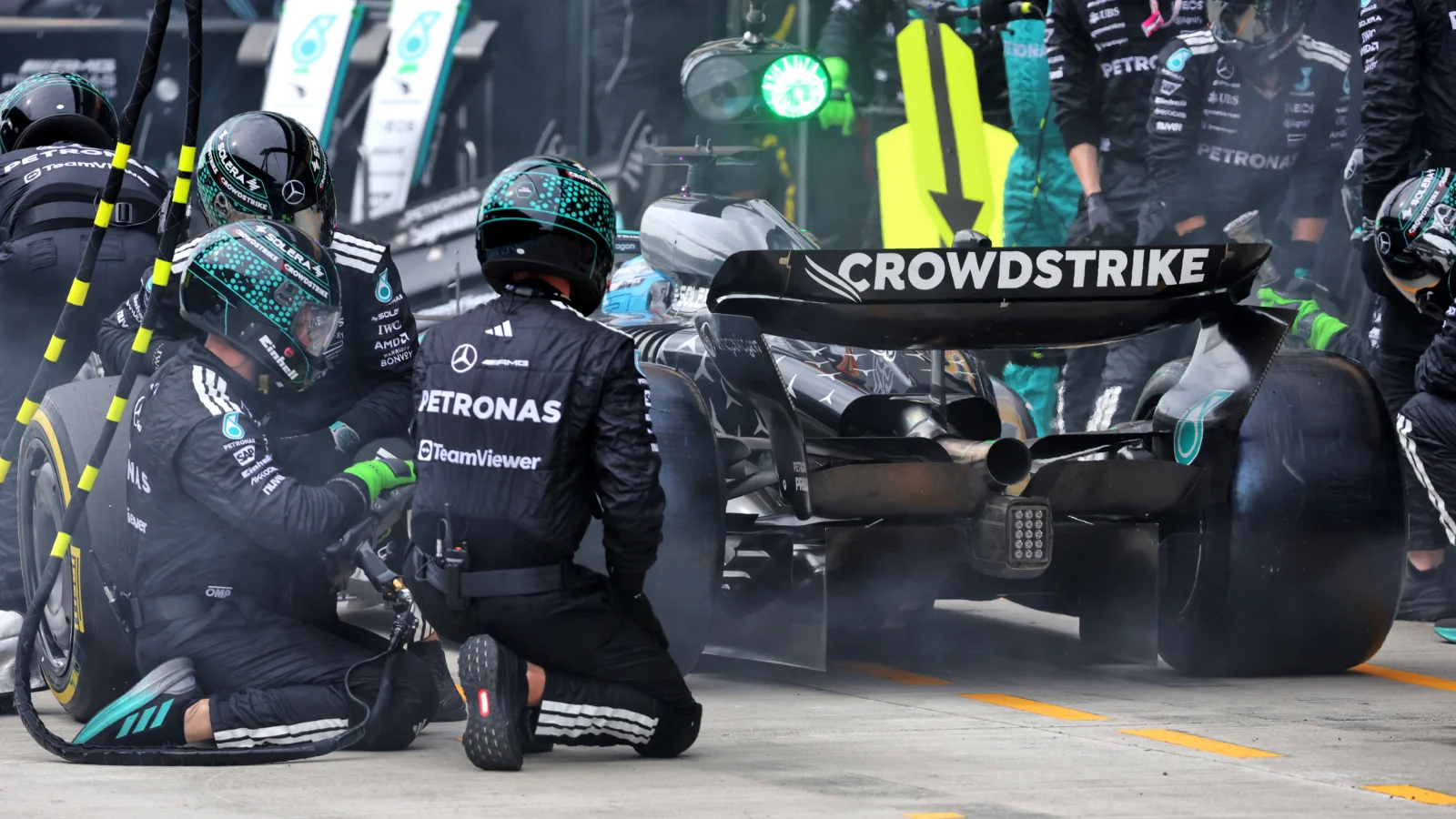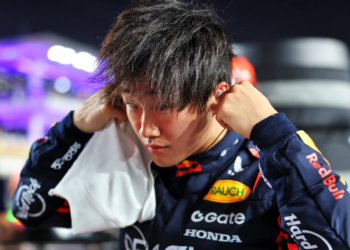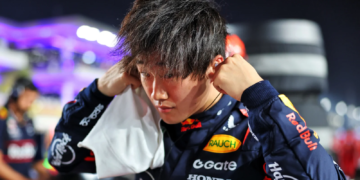Mercedes‘ Formula 1 Trackside Engineering Director Andrew Shovlin has explained the “compromise” the team had to contend with amid the decision to scrap its rear suspension upgrade.
The German marque introduced the revision, designed to alter the movement of the rear axle, therefore producing consistent downforce, at the start of the European leg of the season.
After one outing at Imola, it was scrapped for the following two rounds at Monaco and Barcelona, before being reintroduced for the Canadian Grand Prix.
The team scored its best result of the season to date in Montreal, with victory through George Russell and third from Andrea Kimi Antonelli.
But since then, the W16 has regressed in terms of his competitiveness, culminating in a miserable weekend at Spa-Francorchamps.
Antonelli failed to make it out of Q1 in both Sprint and Grand Prix qualifying, with Russell labouring to sixth place, over half-a-minute off the lead car at the chequered flag.
The team then chose to do away with the upgrade, a decision which was two-fold.
Not only did the upgrade appear to open up frailties of the car that had yet been exposed, but it obstructed the team from developing it in any other way.
Shovlin, speaking to media including Motorsport Week, detailed the predicament the team was in, reasoning that the cost cap was an additional barrier.
“The reality is even if you’re designing a suspension and gearbox with a completely blank sheet of paper, it is an enormous compromise between where the aerodynamicists want to put all the legs, the various compliances, the kinematic characteristics, where the roll centres are… and it is impossible to actually set everything exactly where you want it to be,” he said.
“So the whole thing is a compromise, and that compromise is more extreme when you’re doing it to an existing gearbox and an existing suspension – and the cost cap means that you can’t just rip it all up and start again.”
![Mercedes' Trackside Engineering Director Andrew Shovlin [right] has explained the "compromise" the team faced](https://www.motorsportweek.com/wp-content/uploads/2025/08/Mercedes-F1-Andrew-Shovlin-1024x576.webp)
Mercedes keeping one eye on 2026
Shovlin theorised that the difficulties the Brackley-based squad endured were likely to be different to those of McLaren and Ferrari, whose respective upgrades have yielded more success.
“The compromises that we might have faced could have been very different to those that Ferrari or McLaren had, so it’s definitely getting into the subtle detail,” he said.
“McLaren have clearly made a great success of it, but it’s not difficult to see how certain aspects can catch you out.”
Shovlin also explained that this year has seen a possible difference in how teams develop their cars, due to them having one eye on the major regulation changes in 2026.
Aerodynamic testing is now more precious than it might usually be, which limits teams, according to Shovlin, to seek advantages through other areas.
“I think it’s the extent of how far you push it,” he said, “not so much that lots of teams may well have had a percentage of anti-lift in the car, but what you could see that McLaren were doing was pushing that extremely hard.
“The fact is that as the aerodynamic gains from the regulations are starting to dwindle. You’re finding smaller and smaller performance steps.
“The other fact is teams have to shift their wind tunnels on to next year’s regulations.
“I think that naturally means that you start looking in other areas that you may not have explored as fully before.
“What you can find from the vehicle dynamics side is it’s logical that towards the end of a set of regulations you start looking in areas that you might not have because the normal bread and butter of aero development starts to dry up.”
READ MORE – Why George Russell feels Mercedes and Lewis Hamilton needed ‘fresh start’ for F1 2025










Discussion about this post